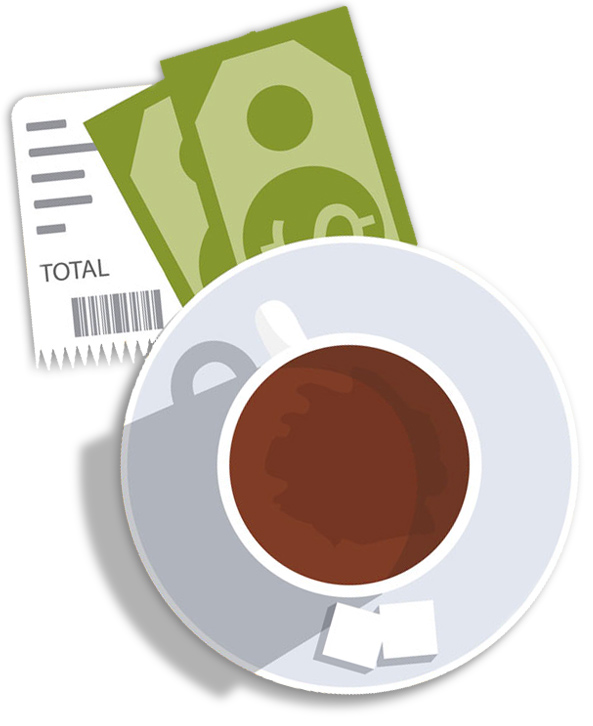Tipping has rattled restaurateurs for years, as they struggle with the merits of tipping and tipping policy. Are tips shared? How are they factored into servers’ wages? What’s the split between front and back of house? What are the tax implications?
Most diners in Canada have accepted the practice for years and use it to reward good service, but every now and then there are rumblings of change in this age-old practice.
This could be one of those times.
2020 and the coronavirus pandemic may have brought tipping into focus as restaurants that closed are slowly reopening and trying to return to some semblance of normality. With increasingly contactless encounters, how do restaurants and their guests handle gratuities? And is there a sea change in the way diners view gratuities?
A recent Canada-wide survey conducted by Sylvain Charlebois at Dalhousie University suggests that more than half of Canadians (56% of respondents) are now in favour of including tips in menu prices. In a 2016-2017 Angus Reid study, it was only 36%, so there is a significant increase, some of it likely because of COVID-19.

This is music to the ears of Bruce McAdams, the Associate Professor, School of Hospitality, Food, and Tourism Management, Gordon S. Lang School of Business and Economics at the University of Guelph. “I think tipping creates an unfair compensation system for workers in the restaurant business. For example, cooks and managers often play just as big of a role in a customer’s experience, but may not get the monetary benefits the wait staff does,” he says.
A 2016 study conducted by McAdams and Prof. Michael von Massow, Department of Food, Agricultural and Resource Economics, found that tipping, in fact, causes challenges ranging from quality control to pay inequity. He’s seeing a resurgence of interest in the issue.
“I think tipping creates an unfair compensation system for workers in the restaurant business.”
Bruce McAdams and Prof. Michael von Massow, Department of Food, Agricultural and Resource Economics
“Two really big things happened this spring,” he says. “One is COVID and one is the attention to social justice issues in North America. With the first, when COVID hit restaurateurs, owners had the time to reflect on an archaic system. The system really has not changed in 30-50 years. Everything from our pricing to costing to rent to fixed costs has pretty much been the same. With COVID, we really had to go deep and look closely at systems. COVID pointed out the inequities. Also, Black Lives Matter. Tipping is discriminatory, with sexist overtones, so that became an issue as well.”
A sea change? Not so fast
Does this mean we’ll be seeing a wholesale change in the way gratuities are handled? A few Canadian restaurants have announced a new no-tipping policy, but so far, the “trend” has not taken hold. At the same time some guests are making a point of tipping more to help offset the financial difficulties servers may have suffered under the pandemic.
“This topic has come up several times, but it has not gained traction,” says Jeff Dover, president of fsSTRATEGY. “In restaurants, service charges have been added for larger groups (i.e., six or more). The service charge started at 10% of sales and has increased significantly. Issues arrise when the service is not good (whether or not it was the server’s fault) and the gratuity or service charge is included. The argument, rightly or wrongly, was that the server knows the tip, and might work to increase it by upselling, however, is not under an incentive to provide good service.”
Building service or tips into the pricing may also put a restaurant at a disadvantage, he adds, compared to other restaurants that don’t follow the practice, since prices will be higher.
Servers are also not generally in favour of built-in service charges, Dover notes, especially when the restaurant institutes tipping pools, since the tips may be added to pay checks and are subject to income tax. “While transparency of tipping is changing as more and more gratuities are processed using credit and debit cards as opposed to cash, not all servers report all tips as income.” In addition, some guests may be put off by the sticker shock of another value-added tax appearing on their checks.

Are tips here to stay?
While more and more restaurant dining is being done off-premises and we are seeing an increase in fast casual concepts where tipping is not as ingrained as in full-service, industry watchers like Jeff Dover think that tipping will remain the norm in full-service restaurants.
Even no-tipping pioneer Danny Meyer has returned to a tipping policy, but with a difference. In 2015, Meyer, the entrepreneur behind New York’s Union Square Hospitality Group, eliminated tipping as being an inequitable practice. But with restaurants reopening under COVID-19, even the pioneering Meyer has rethought his no-tipping policy in favour of tips — but with a sharing component added.
Tipsheet
If you do decide to change your tipping strategy, how do you communicate the new policy?
For front-of-house and back-of-house staff
- Let staff know what the new plan is and how it will affect them.
- Be clear with how much and when staff will receive the tips. Currently, receipt of tips is instant (i.e., the day of the shift or the next shift if staff leave early).
- Make sure to train staff in communicating the tipping messaging to the customers.
For guests
- Let guests know how the system works and that all service charges added to checks are going to those who prepared and served their meals as opposed to managers and/or the restaurant operators.
- Be clear in communicating your reasons for making the change — to provide a living wage for all employees in a fair and consistent way.
Don’t forget to revisit your decision. Times change, as we’ve all learned with the COVID-19 pandemic.
Important link
- For more information read: Q&A with Professor Bruce McAdams



